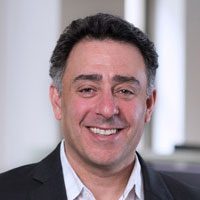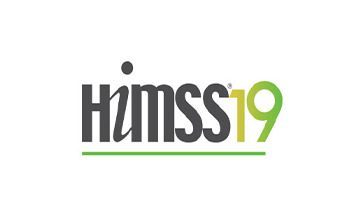Resources
HIMSS Quoteables: Highlights from VigiLanz’s HIMSS Presentations
The 2019 HIMSS Conference, held February 11 to 15 in Orlando, shed light on some of the most exciting developments in the health IT space.
For us, the conference had many high points, including the unveiling of our latest report: “Clinical Surveillance: The Next Step in Value-Based Care.” The report, based on a survey of 100 healthcare executives, reveals where hospitals are in the journey to higher value care, and how they are using data analytics, EMRs, and clinical surveillance tools to support their efforts.
During the conference, several members of our leadership team presented on the topic of clinical surveillance, as did several hospital leaders whose health systems are currently using our technology. Here are a few of our favorite quotes from their presentations:

Nicholas Desai, MD
Nicholas Desai, MD, system chief medical information officer at Houston Methodist Hospital, on how physicians are responding to IllumiCare’s Smart Ribbon, which integrates alerts, such as those provided by VigiLanz, into the EMR. For more of Desai’s thoughts, click here.
“I can call [the Smart Ribbon] up when I want it. I can force it to be active or passive. I engage how I want it. We shared this [tool] with about 145 doctors and providers … at the end of the 90-day pilot, not only did we shift the curve, but 72% of doctors at the end of our pilot said, ‘This is not just valuable, finally you’re giving me a tool that is meaningful.’ In every one of those conversations, cost was important but not the only reason why they liked the tool. What they liked about it was that it allowed them to see things in a more holistic view in one place.”
“We were able to shift the cost curve within the 90-day mark about $107,000. Overall, we believe that in 2019 for this hospital, we have an opportunity of 4.5% reduction in our costs, which will lead to $1.7 million and $2.8 million, just for one hospital. As an organization, this could be closer to in the ballpark of $18-, $19-, $20 million dollars. It did nothing but present information in a very consumable format.”
Bart Abban, PhD
Bart Abban, PhD, director analytics and data science, VigiLanz, also speaking about the value the Illumicare-VigiLanz partnership brings to providers. For more of Abban’s thoughts, click here.
“You can send this information straight into the purview of the doctor with our partnership with [Illumicare]. So if you want to stay in Cerner or another EMR tool that you use, you don’t have to enter our system, we can send it right to the system the physicians are working on.”
Dave Levin, MD
Dave Levin, MD, chief medical officer, Sansoro Health, on the benefits API integration is bringing his healthcare system related to clinical surveillance and data exchange. For more of Levin’s thoughts, click here.
“An API approach to integration greatly reduces the amount of time that’s required to deploy the [clinical surveillance] solution, and that translates into cost saving. But more importantly, it translates into a better user experience, a richer data set that takes a product that’s already really good and makes it even better … We’re dealing with really important clinical problems here, and the sooner we can get these solutions in place and begin to impact the outcomes, the better for everyone.”
“This is really not about APIs, it’s about solving important business and clinical problems. I think the VigiLanz-Sansoro partnership is probably one of the best examples anywhere in healthcare right now about how this can work.”
Adam Klass
Adam Klass, chief technology officer, VigiLanz, also speaking about the value of APIs in clinical surveillance. For more of Klass’ thoughts, click here.
“The value, as you build out a full API footprint, is getting that full clinical model from Day 1, so you’re not having to circle back to healthcare organizations to gather more data over time. The hospital IT team involvement becomes significantly less as you use these APIs. The cost is also significantly less because you remove the maintenance and support that goes into supporting interfaces.”
“We’re listening for things like your admissions, discharges, and transfers; your medication orders; your lab test reorders; preliminary and final micro susceptibility results, drug administrations, procedures, and surgeries. The more information that can come into the VigiLanz private cloud, the more types of things we can do around surveillance of that data.”
Bart Abban, PhD
Abban, speaking about how VigiLanz is providing physicians with predictive analytics that can improve patient care and prevent problems from escalating. For more of his thoughts, click here.
“There are several companies around here selling point-solution singular products [for predictive analytics]. With our platform you can do readmissions today, tomorrow you can start looking at mortality risk, you can look at adverse events, glycemic control. We are currently developing a model on C. diff to alert clinicians to patients who are at high risk of getting C. diff. The sky is the limit.”
Unlocking Patient Safety: The Power of Autodetection in Healthcare
The key to preventing safety events and reducing harm is not about what you know is happening, but what you don’t know. Hear from Dr. Chris Emerson on how autodetection can help healthcare leaders gain visibility into the true state of patient safety inside their institutions.
Enhancing Patient Safety with Automated Event Detection: A Hospital’s Guide
Discover the benefits of autodetection, why every hospital should deploy it, and how one innovative health system is using it to enhance patient safety.



